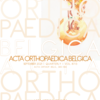Tenosynovial giant cell tumor of the pes anserinus bursa with secondary involvement of a reconstructed autologous anterior cruciate ligament – A case report
Tenosynovial giant cell tumor; anterior cruciate ligament; ACL reconstruction; pes anserinus; case study; and pigmented villonodular synovitis
Published online: Feb 16 2022
Abstract
Tenosynovial giant cell tumor (TGCT) is defined by the World Health Organization (WHO) as a family of lesions most often arising from the synovium of joints, bursae and tendon sheaths. It is composed of synovial- like mononuclear cells, admixed with multinucleate giant cells, foam cells, siderophages and inflammatory cells (1). It can have various clinical manifestations, and is therefore subdivided in a diffuse and a localized/ nodular subtype. Furthermore, the lesions can have an intra- or extra-articular location.
The purpose of this paper is to present the case of a 41-year-old male suffering from multifocal extra- and intra-articular TGCT of the right knee, with involvement of the pes anserinus bursa and an anterior cruciate ligament (ACL) autograft respectively. The ACL reconstruction was performed 11 years prior to the diagnosis of the TGCT, using tendons harvested from the pes anserinus.
Our case illustrates the risk of transferring TGCT from an extra- to intra-articular location during ACL reconstruction, when using tendons of a pes anserinus prone to develop this condition. To our knowledge, no similar case was published in the literature so far.
